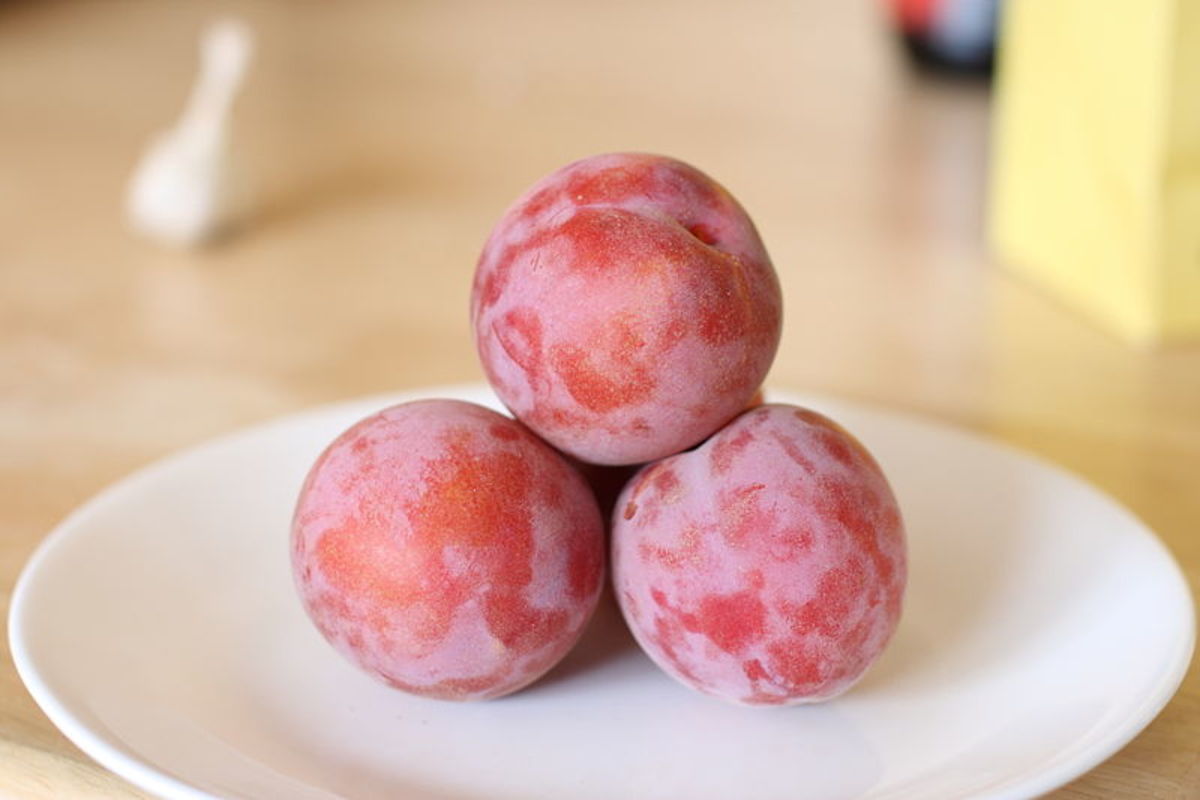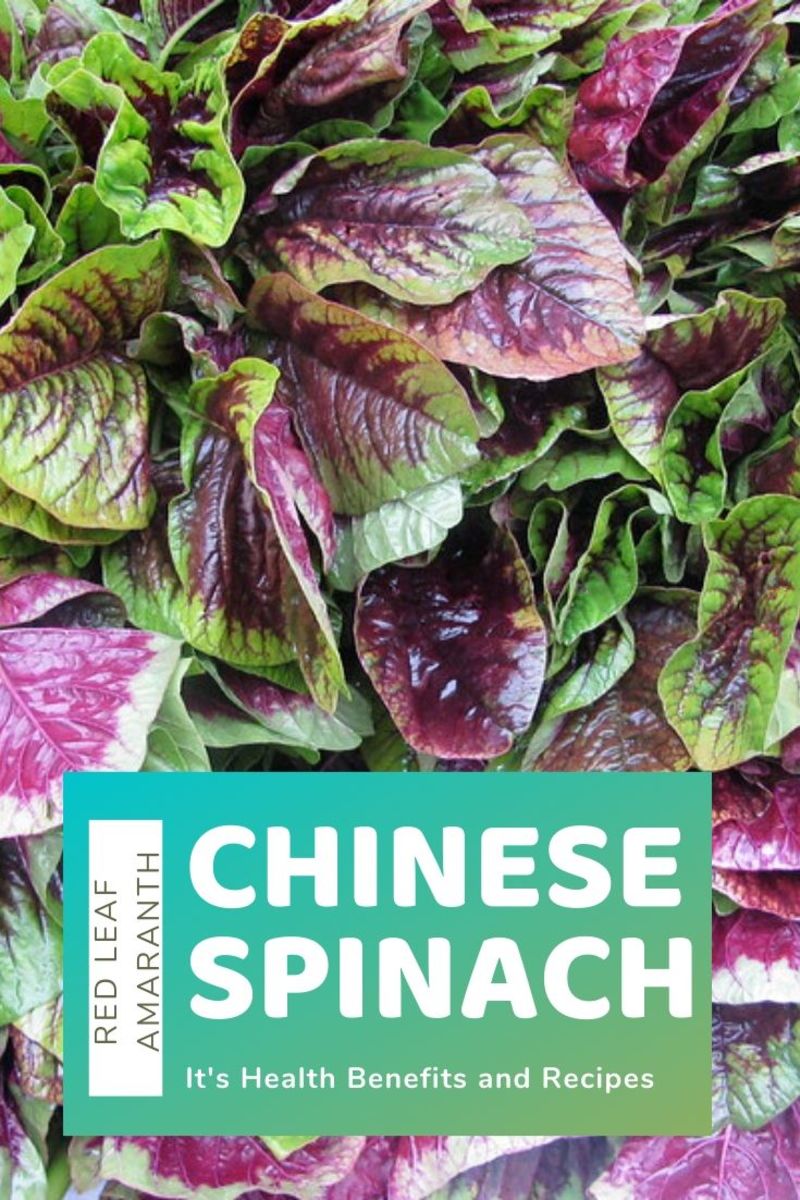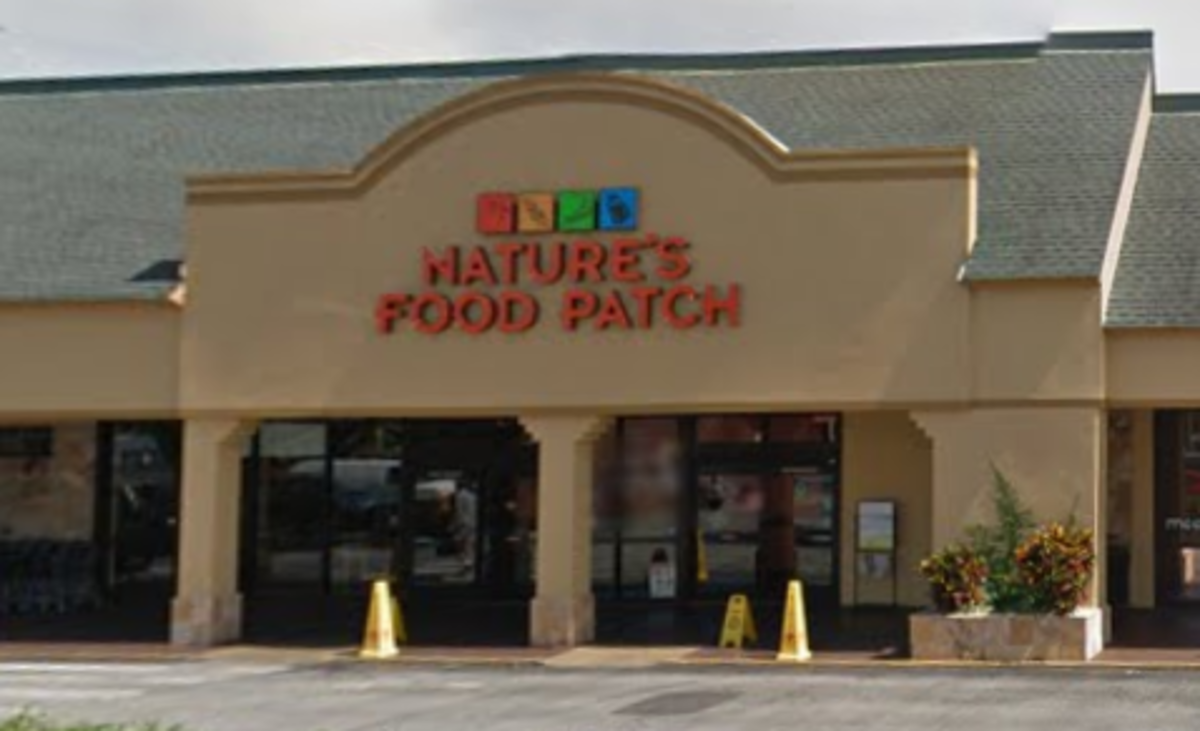A Beginner's Guide To Purchasing Fruits and Vegetables in Season
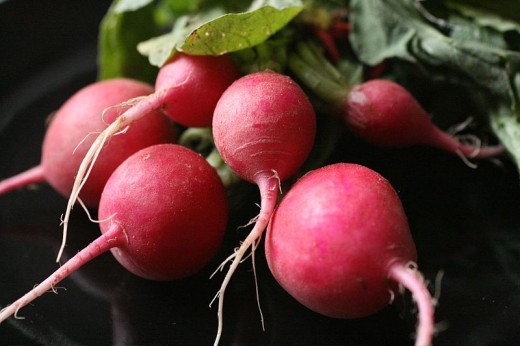
We all understand the benefit of eating five servings of fruits and vegetables every day. You even go to the supermarket, strutting you recyclable grocery bag, with the best intentions to buy food that is sustainable and Eco-friendly.
When you walk into the local supermarket, there are mounds of beautiful fruits and vegetables piled up high. Do you ever wonder how it’s possible to get perfectly red and shiny tomatoes in the middle of winter? Why is it more beneficial to eat vegetables that are in season? How do you get started?
Finding local, in-season food is easier than you think, and with this guide, you will be a pro at being green! Provided below is a guide to eating fresh fruits and vegetables that are in season- when they are at their peak flavor and least expensive.
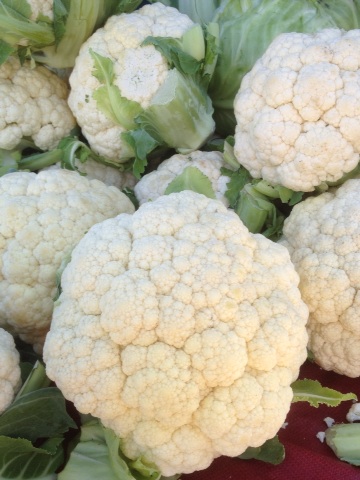
5 Reasons to consider eating fruits and vegetables in season
- Save the environment
- Taste better
- Support local farmers
- More nutritious.
- Cheaper
Earlier generations cooked up dinner menus that were determined by what was grown locally and what could be stored and preserved through winter months. Both of my grandparents lived up to their late 80's. My aunt is still traveling and hiking at the age of 76 years old this year. What do they all have in common? They all ate produce that were in season.
In today's world of convenience, we are used to eating any kind of produce we want, whenever we want. Yet, fruits and vegetables in season are more beneficial for your health, your family's health, and our planet's health.
When you buy produce that are NOT in season:
Have you ever taken the time to look at the cute tiny stickers on that mango? “Mexico’s finest mangoes.” Those mangoes may be their finest, but they have been sitting in that freight truck for about 2000 miles. They also made a visit to the dark warehouses and finally found their way to the supermarket, and eventually on your counter top.
- Eating out-of-season food means it’s been transported from a far distance.
- It’s been grown in an energy-intensive climate controlled environment.
- They are picked before they are completely ripe, to ensure that they don't spoil during their transport. Researchers have shown that fruits and vegetables have higher nutrients when they are picked in season.
- Transporting fruits and vegetables over long distances has a negative impact on our environment due to greenhouse gas emissions and atmosphere pollution. The result is a depletion of the earth's limited energy resources.
So how can you buy fruits and vegetables in season? Let's get started...
- Farmer's Market
- Community Supported Agriculture (CSA)
- "Pick Your Own"
- Fruit Tree Projects
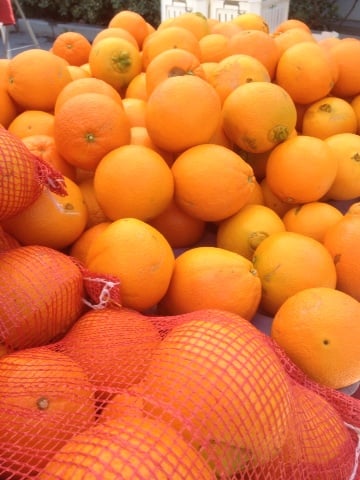
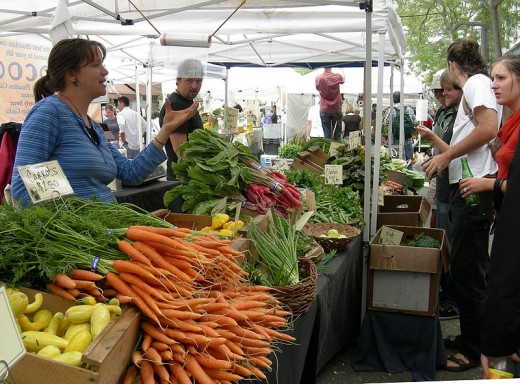
Visit your local friends-THE FARMER’S MARKET
For a list of farmers market near you, click here.
The farmer’s market is the most efficient route from producers to buyers, ensuring the freshest produce, the shortest distance traveled, and the best price possible without involving the middleman.
There are many farm stands that offer fruits and vegetables -some are picked as early as that morning! Most local farmers use organic methods to grow their fruits and vegetables. By eating organic foods, you are reducing exposure to harmful pesticides and artificial chemicals. Organic foods that are in season provide the most nutrients and antioxidants.
Get to know your farmers and make connections with the people who grow your vegetables. Learn more about their gardening methods. You’d be surprised to learn that most of them are very eager to explain to you their farming practice. It’s also a great way to get additional discounts on that bag of sweet potatoes.
Visiting the farmer’s market can also be a fun family outing on a beautiful sunny Saturday. It's also a great way to teach your children how to live a healthy, eco-friendly lifestyle.
Cherry farm in Brentwood, CA
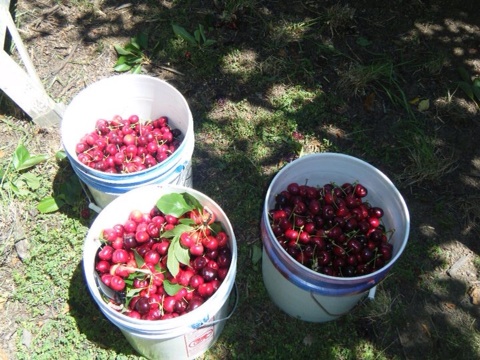
Sweetest cherries you will ever eat!
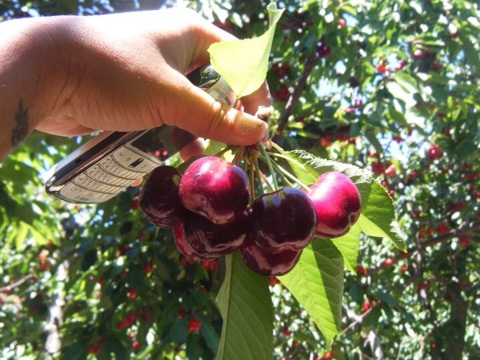
Search for "Pick Your Own" farms:
"Pick your own" orchards and farms
Many local farms offer you the chance to pick your own fruits and vegetables. They usually charge at a lower rate than the ones being sold at the health super markets. Picking fruits and vegetables is a wonderful activity for the whole family. Kids love to carry buckets and roam around the farm picking cherries! It is also very rewarding! Don't be surprised if your kids love to eat fruits and vegetables after picking it themselves!
I try to visit the cherry farms in Brentwood during the month of May and June, when the cherries are at their peak. There is something special and peaceful about stepping onto a farm that is surrounded by beautiful cherry orchards. Theses organic cherries are usually $1.50/lb to $2.00/lb depending on which farm you visit, compared to the usual $3 to $4.99/lb at health food stores. I always end up with extra buckets of cherries, which inspires me to create many dishes that includes cherries: cherry pie, cherry ice-cream, cherry smoothies, cherry jam, and cherry muffins.
Tips on finding the farms:
- Always call to verify that they are still in business. Some farms may not offer certain fruits or vegetables due to various reasons. So make sure that your chosen farm is still operating.
- Verify the hours and days that they will be opening. It's best to call the day before since bad weather can prevent the farms from opening for business.
- Ask farmers if they provide buckets and bathroom facilities. Some farms even offer locations for a picnic!
- Learn about their cost to ensure that you have the best deal possible. Prices vary from farm to farm depending on what's available and popularity.
- Verify methods of payment. Some smaller farms only accept cash.
- Verify directions.
- Leave your pets at home.
- Bring sunscreen, hats, and comfortable clothes. Don't wear open toe shoes or sandals.
- Bring a camera to capture some memories for the family photo album.
- Have fun!
Clagett Farm CSA
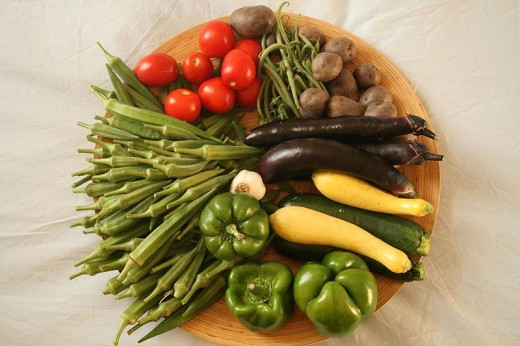
Find a CSA farm near you!
Search National farm databases by city, state, or ZIP
Search State and regional farm directories
Join a CSA (Community Supported Agriculture)
Community Supported Agriculture (CSA) is becoming more popular in major cities. It directly links local farmers to consumers. Each season, members purchase a share of a farmer’s crop before it’s planted. The farmer delivers healthy fruits and vegetables to your door step. If you live close enough, you can also pick up the produce from the farm directly. The food is harvested as early as that morning or the day before.
Think of it as a group of people buying “shares” in the harvest, allowing the farmer to pay for seed, equipment, water, and effort. The point of this arrangement is to help people who live in cities obtain fresh and organically grown produce. Since CSA cuts out the “middleman,” it helps to lower costs for both the farmers and consumers.
CSA farmers typically use organic farming methods, minimizing environmental pollution. Depending on the farm, you now have access to a variety of organic fruits, vegetables, herbs, and eggs that are in season. It is a community supported arrangement, benefiting both farmers and consumers.
New Leaf CSA
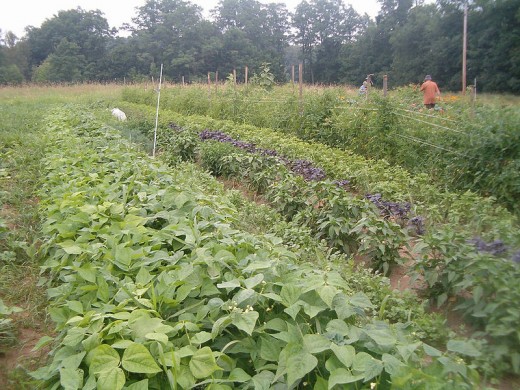
Community Supported Agriculture (CSA)
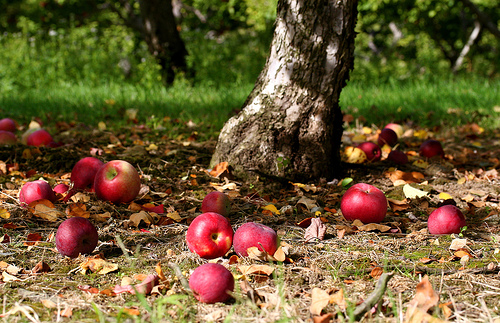
Directory of Fruit Tree Projects
Fruit Tree Projects
There are many fruit trees on people’s yards that are left unpicked. Some people don’t have the time to pick it and are left with fruits that end on the ground. In certain communities, groups of people can now go out and pick fruits and share. Some of these fruits are usually offered to food banks, community centers, and the fruit-tree owners.
There are fruit-harvesting groups that started in California, a place usually filled with abundant fruit trees. These type of groups are becoming more popular all over the states and other countries. The common goal is: Making use of food that would otherwise rot and go to waste. Some people gather fruits that grow along the sidewalks, highways, and other public places. Others take advantage of the surplus fruits around their neighbor's yards.
In this economy, group fruit harvesting brings the economy together, and gives an opportunity for neighbors to meet and share their food.
You can harvest the fruits for yourself, for the tree owners, or support local organizations and homeless shelters.
Fruits and vegetables in season, listed by month
Month
| Vegetables
| Fruits
|
|---|---|---|
January
| Broccoli Cabbage, Cauliflower, Grapefruit, Leeks
| Lemons , Oranges , Papaya , Tangelos , Tangerines
|
February
| Broccoli, Cauliflower
| Grapefruit , Lemons , Oranges , Papayas , Tangelos
|
March
| Broccoli, Lettuce
| Mangoes , Pineapple
|
April
| Artichoke, Asparagus , Broccoli, Lettuce, Rhubarb , Peas , Zucchini
| Mangoes , Pineapple
|
May
| Artichoke , Asparagus, Broccoli, Lettuce , Okra , Rhubarb , Peas , Zucchini
| Cherries, Apricot, Pineapple
|
June
| Corn , Lettuce
| Apricots , Blueberries , Cantaloupe , Cherries , Corn , Lettuce , Peaches , Strawberries , Watermelon
|
July
| Corn , Cucumbers , Green beans , Lettuce , Summer squash
| Apricots , Blueberries , Cantaloupe , Kiwi , Peaches , Plums , Raspberries , Strawberries , Tomatoes
|
August
| Corn , Cucumbers , Eggplant , Lettuce , Summer squash
| Apricots , Blueberries , Cantaloupe , Kiwi , Peaches , Plums , Raspberries , Strawberries ,Watermelon
|
September
| Eggplants , Lettuce , Pumpkins ,Spinach
| Apples , Grapes , Persimmon , Pomegranate , Tomatoes
|
October
| Broccoli , Lettuce , Pumpkins ,Spinach , Sweet potatoes , Winter squash
| Apples , Cranberries , Grapes ,Pomegranate
|
November
| Broccoli , Mushrooms , Pumpkins ,Spinach ,Sweet potatoes , Winter squash
| Apples , Cranberries , Oranges , Pears , Persimmon , Pomegranate , Tangerines
|
December
| Broccoli , Cauliflower , Mushrooms , Sweet potatoes
| Grape fruit , Oranges , Papayas , Pears , Pomegranate , Tangelos , Tangerines
|
Please do not use this table without obtaining permission from the author. Thank you.
Other Resources
Here is a guide to buying vegetables, including recipes:
More information on CSA farms:
Recommended readings:
Wrapping it up
You don’t have to be a planet-loving, Mother Nature worshiper to have a reason to eat locally.
By taking that one small step to living more “green,” and eating fruits and vegetables in season, you are saving the environment, as well as your health.
In health and joy,
Turtlewoman.
All Rights Reserved
Copyright © 2012 Kim Lam (Turtlewoman)



